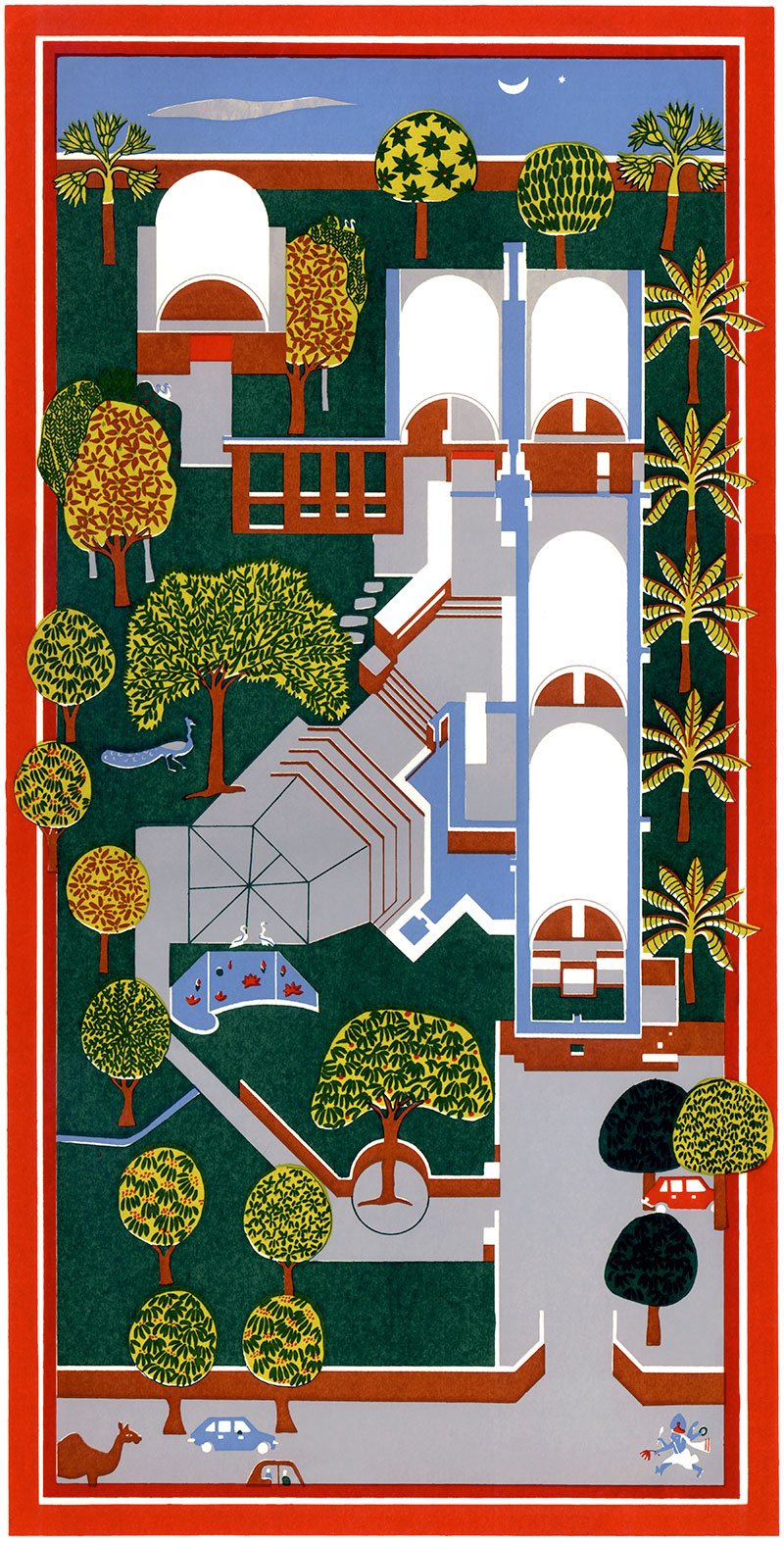
Izvor: The Pritzker Architecture Prize
Indijski arhitekta Balkrišna Vitaldas Doši (Balkrishna Vithaldas Doshi) imenovan je laureatom Pricker nagrade (Pritzker Prize) za 2018. godinu, najprestižnije nagrade u arhitekturi.
Balkrishna Doshi, jedan od najuticajnijih indijskih arhitekata 20. veka, je 45. dobitnik Pricker nagrade. On je prvi indijski arhitekta koji je nagrađen ovim priznanjem.
Doshi i njegov studio Vastu-Shilpa imaju portfolio raspona više od 70 godina, koji uključuje i saradnje sa Le Corbusier-om i Louis Kahn-om.
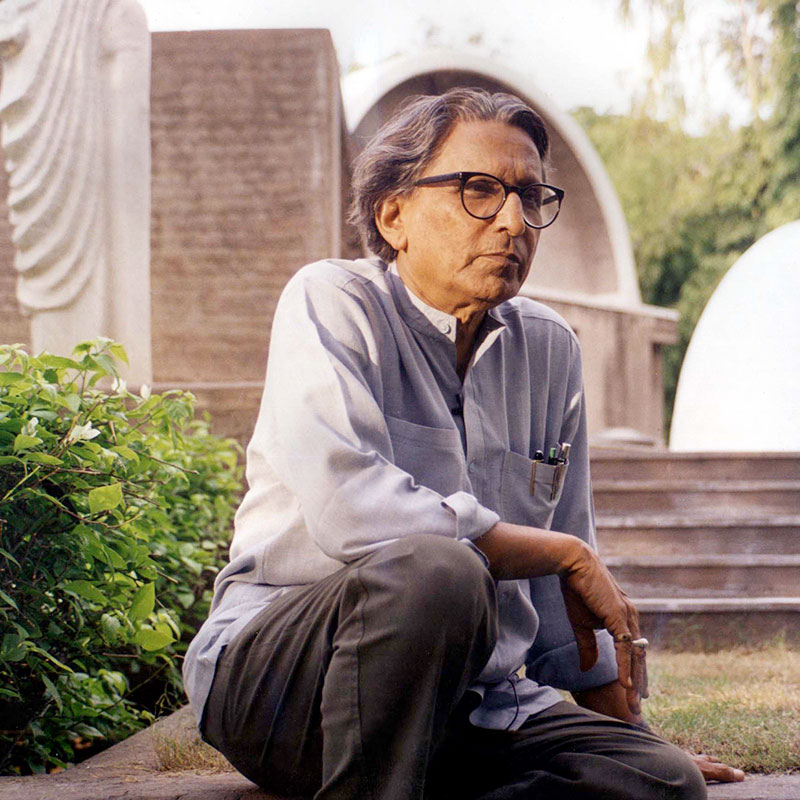
Balkrishna Doshi | Foto © VSF
Arhitekta, urbanistički planer i pedagog u poslednjih 70 godina, Doshi je bio instrumentalan u oblikovanju diskursa arhitekture širom Indije i na međunarodnom nivou. Pod uticajem majstora arhitekture 20. veka Charles-Édouard Jeanneret-a, poznatijeg kao Le Corbusier, i Louis Kahn-a, Doshi je bio u mogućnosti da interpretira arhitekturu i transformiše je u izgrađene radove koji poštuju istočnu kulturu, a istovremeno poboljšavaju kvalitet života u Indiji. Njegov etički i lični pristup arhitekturi dodirnuo je živote svake društveno-ekonomske klase u širokom spektru žanrova od pedesetih godina 20. veka.
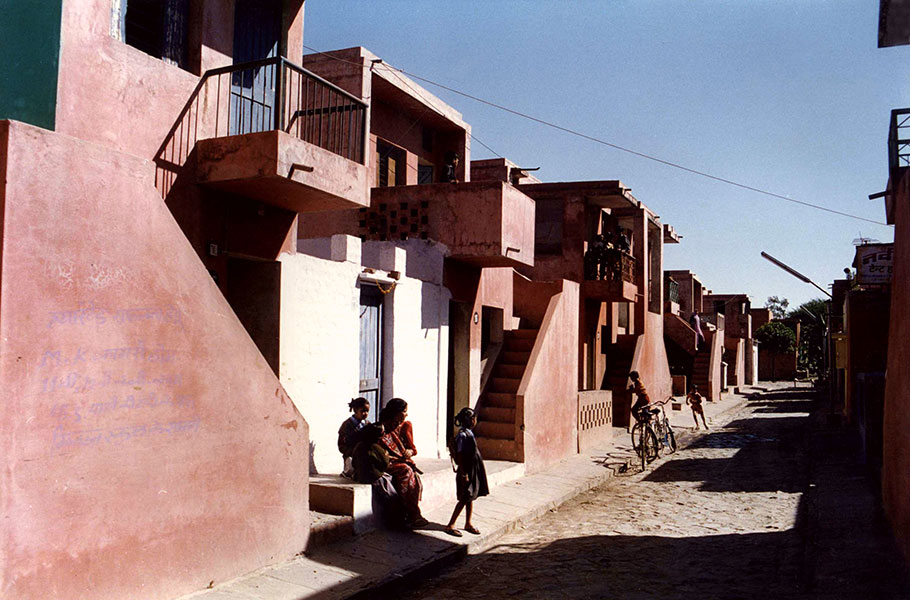
Balkrishna Doshi – Aranya Low Cost Housing, Indor, Indija, 1989. | Foto © VSF
“Moji radovi su produžetak mog života, filozofije i snova koji pokušavaju da stvore riznicu arhitektonskog duha. Ovu prestižnu nagradu dugujem mom guruu Le Corbusier-u. Njegova učenja dovela su me do preispitivanja identiteta i prisiljavala me da otkrijem novi regionalno usvojeni savremeni izraz za održivo holističko stanište “, komentariše Doshi.
On nastavlja: “sa svom svojom poniznošću i zahvalnošću želim da se zahvalim Žiriju Nagrade Pritzker za ovo duboko dirljivo i ispunjavajuće priznanje za moj rad. Ovo potvrđuje moje uverenje da ‘život slavi kada se stil života i arhitektura spoje’.”
Doshi-jeva arhitektura istražuje odnose između osnovnih potreba ljudskog života, povezanosti sa samim sobom i kulturom, i razumevanja društvenih tradicija, u kontekstu mesta i njegovog okruženja, i kroz odgovor na modernizam. O sećanjima na detinjstvo, od ritmova vremena do zvuka zvona hrama, govori njegov dizajn. On opisuje arhitekturu kao produžetak tela, a njegova sposobnost da pažljivo odgovori na funkciju koja u isto vreme uzima u obzir klimu, pejzaž i urbanizaciju, predstavlja se kroz njegov izbor materijala, preklapanje prostora i korišćenje prirodnih i harmonizirajućih elemenata.
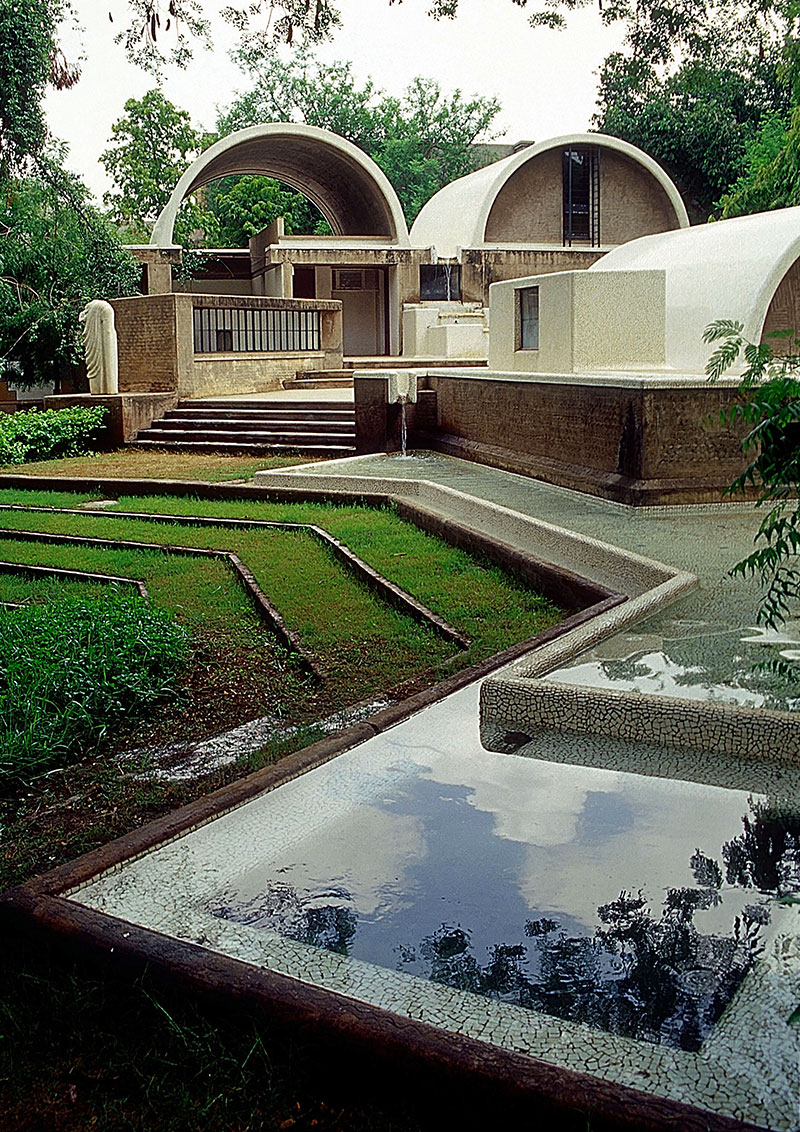
Balkrishna Doshi – Sangath, studio arhitekte, Ahmedabad, Indija, 1980. | Foto © VSF
“Profesor Doshi je rekao: ‘Dizajn pretvara skloništa u domove, stanovanje u zajednice i gradove u magnete mogućnosti’”, komentariše gospodin Pritzker. “Životni rad Balkrishna Doshi-ja istinski naglašava misiju Nagrade – demonstrira umetnost arhitekture i neprocenjivu službu čovečanstvu. Čast mi je da za 40-godišnjicu ove nagrade predstavim arhitektu koji nam je svima doprineo više od 60 godina službe.”
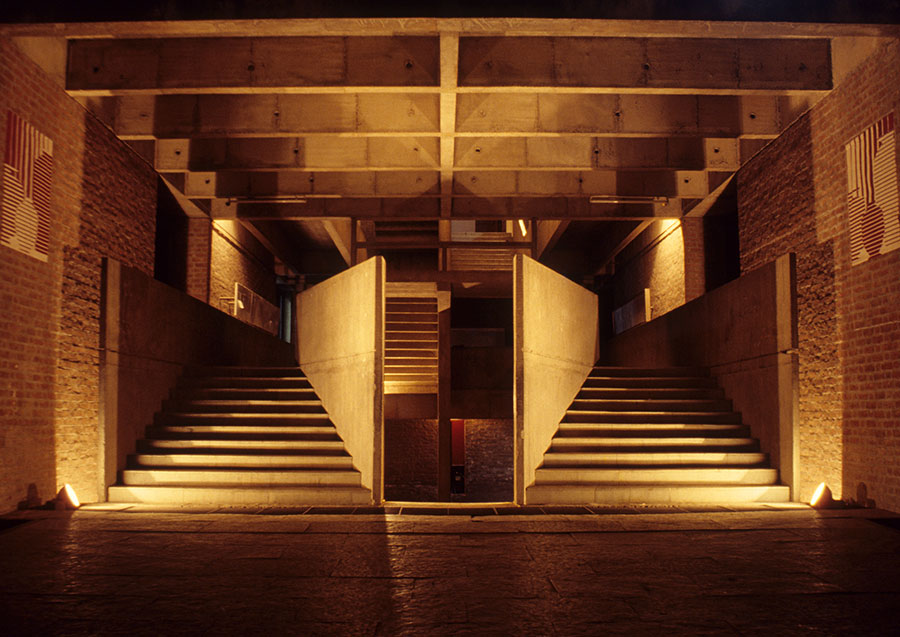
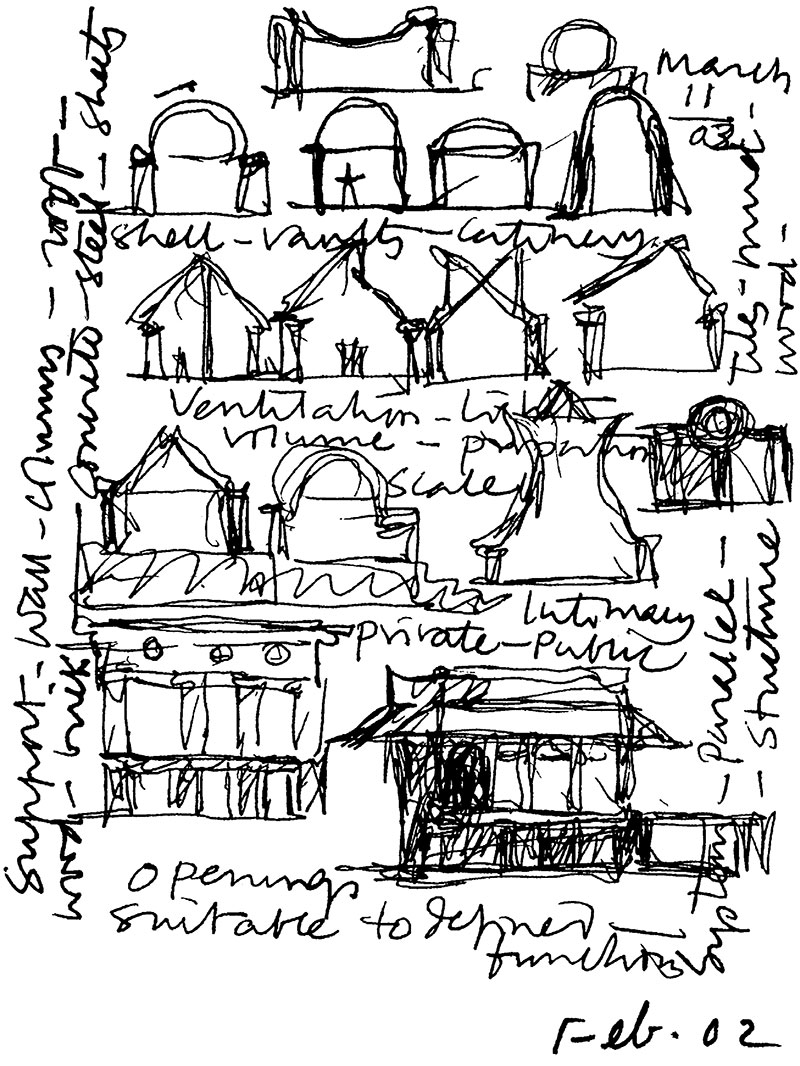
Balkrishna Doshi – Centre for Environmental Planning & Technology, Ahmedabad, Indija, 1966–2012. (iz više faza) | Foto i skica © VSF
Arhitekt je dizajnirao socijalno stanovanje Aranya Low Cost Housing (Indor, 1989), u kome je trenutno smešteno preko 80.000 osoba kroz sistem kuća, dvorišta i lavirint unutrašnjih staza. Preko 6.500 rezidencija kreće se od skromnih jednosobnih stanova do prostranih kuća, u kojima su smešteni stanari sa niskim i srednjim prihodima. Preklapajući slojevi i prelazna područja podstiču fluidne i prilagodljive životne uslove, uobičajene u indijskom društvu.
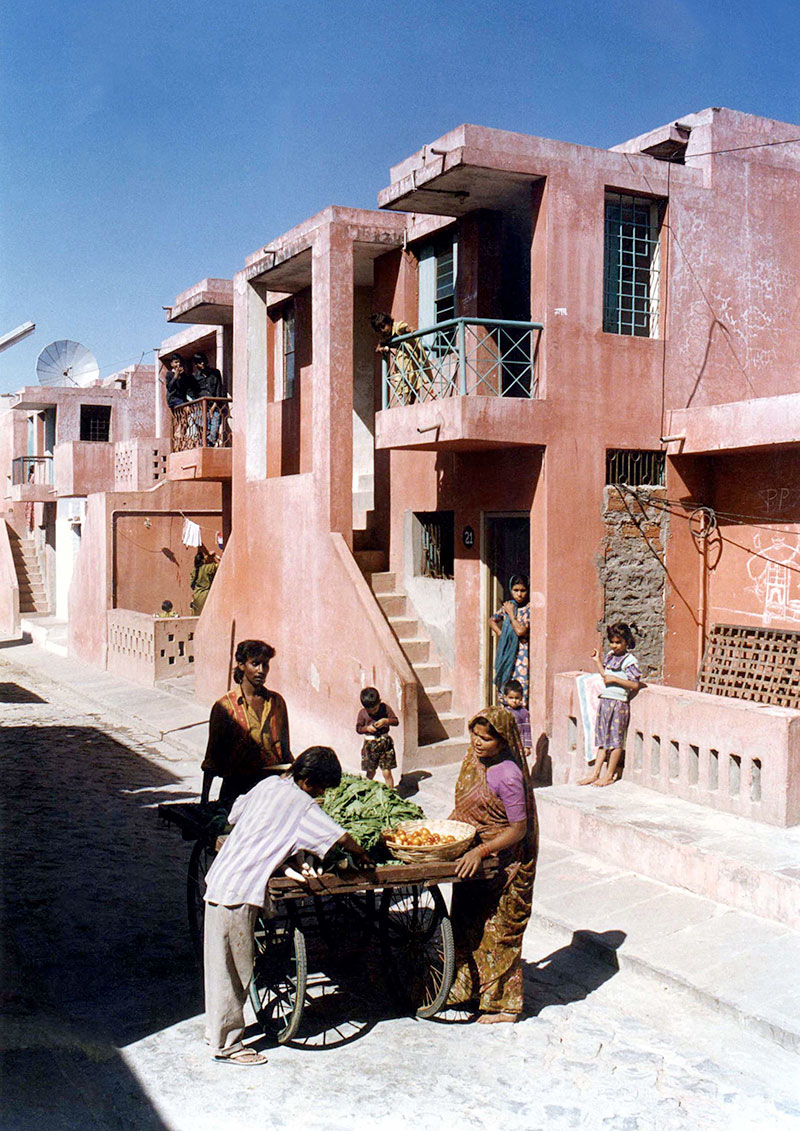
Balkrishna Doshi – Aranya Low Cost Housing, Indor, Indija, 1989. | Foto © John Paniker
Arhitektura Balkrishna Doshi-ja je i poetična i funkcionalna. Indijski institut za menadžment (Bangalor, 1977-1992), inspirisan tradicionalnim indijskim gradovima i hramovima poput lavirinta, organizovan je kao međusobno povezivanje zgrada, sudnica i galerija. Takođe obezbeđuje različite prostore zaštićene od vruće klime. Širok spektar zidova i ogromnih koridora ispunjenih zelenilom omogućavaju posetiocima da budu istovremeno u zatvorenom i na otvorenom prostoru. Dok ljudi prolaze kroz zgrade i prostore, Doshi ih poziva da doživljavaju svoje okruženje i takođe sugeriše mogućnost transformacije.
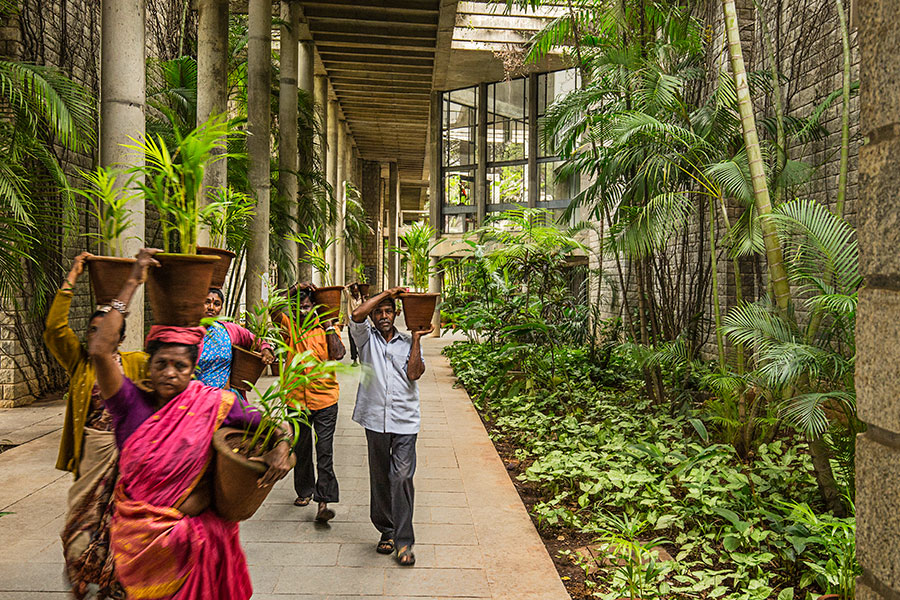
Balkrishna Doshi – Indian Institute of Management, Bangalor, Indija, 1977–1992. (iz više faza) | Foto © VSF
Pročitajte obrazloženje žirija Prickerove nagrade za 2018. godinu u originalu:
Indian architect Balkrishna Doshi has continually exhibited the objectives of the Pritzker Architecture Prize to the highest degree. He has been practicing the art of architecture, demonstrating substantial contributions to humanity, for over 60 years. By granting him the award this year, the Pritzker Prize jury recognizes his exceptional architecture as reflected in over a hundred buildings he has realized, his commitment and his dedication to his country and the communities he has served, his influence as a teacher, and the outstanding example he has set for professionals and students around the world throughout his long career.
Doshi, as he is fondly called by all who know him, worked with two masters of the 20th century—Le Corbusier and Louis Kahn. Without a doubt, Doshi’s early works were influenced by these architects as can be seen in the robust forms of concrete which he employed. However, Doshi took the language of his buildings beyond these early models. With an understanding and appreciation of the deep traditions of India’s architecture, he united prefabrication and local craft and developed a vocabulary in harmony with the history, culture, local traditions and the changing times of his home country India.
Over the years, Balkrishna Doshi has always created an architecture that is serious, never flashy or a follower of trends. With a deep sense of responsibility and a desire to contribute to his country and its people through high quality, authentic architecture, he has created projects for public administrations and utilities, educational and cultural institutions, and residences for private clients, among others.
He undertook his first project for low-income housing in the 1950s. Doshi stated in 1954, “It seems I should take an oath and remember it for my lifetime: to provide the lowest class with the proper dwelling.” He fulfilled this personal oath in projects such as Aranya Low-cost Housing at Indore, 1989, in central-west India and the Co-Operative Middle Income Housing, Ahmedabad, India of 1982, and many others. Housing as shelter is but one aspect of these projects. The entire planning of the community, the scale, the creation of public, semi-public and private spaces are a testament to his understanding of how cities work and the importance of the urban design.
Doshi is acutely aware of the context in which his buildings are located. His solutions take into account the social, environmental and economic dimensions, and therefore his architecture is totally engaged with sustainability. Using patios, courtyards, and covered walkways, as in the case of the School of Architecture (1966, now part of CEPT) or the Madhya Pradesh Electricity Board in Jabalpur (1979) or the Indian Institute of Management in Bangalore (1992), Doshi has created spaces to protect from the sun, catch the breezes and provide comfort and enjoyment in and around the buildings.
In the architect’s own studio, called Sangath (Ahmedabad, India, 1980), we can see the outstanding qualities of Balkrishna Doshi’s approach and understanding of architecture. The Sanskrit word Sangath means to accompany or to move together. As an adjective, it embodies that which is appropriate or relevant. The structures are semi-underground and totally integrated with the natural characteristics of the site. There is an easy flow of terraces, reflecting ponds, mounds, and the curved vaults which are distinguishing formal elements. There is variety and richness in the interior spaces that have different qualities of light, different shapes as well as different uses, while unified through the use of concrete. Doshi has created an equilibrium and peace among all the components—material and immaterial—which result in a whole that is much more than the sum of the parts.
Balkrishna Doshi constantly demonstrates that all good architecture and urban planning must not only unite purpose and structure but must take into account climate, site, technique, and craft, along with a deep understanding and appreciation of the context in the broadest sense. Projects must go beyond the functional to connect with the human spirit through poetic and philosophical underpinnings. For his numerous contributions as an architect, urban planner, teacher, for his steadfast example of integrity and his tireless contributions to India and beyond, the Pritzker Architecture Prize Jury selects Balkrishna Doshi as the 2018 Pritzker Laureate.
Jury Members:
Glenn Murcutt, Chair
Stephen Breyer
André Aranha Corrêa do Lago
The Lord Palumbo
Richard Rogers
Sejima Kazuyo
Benedetta Tagliabue
Ratan N. Tata
Wang Shu
Martha Thorne, Executive Director
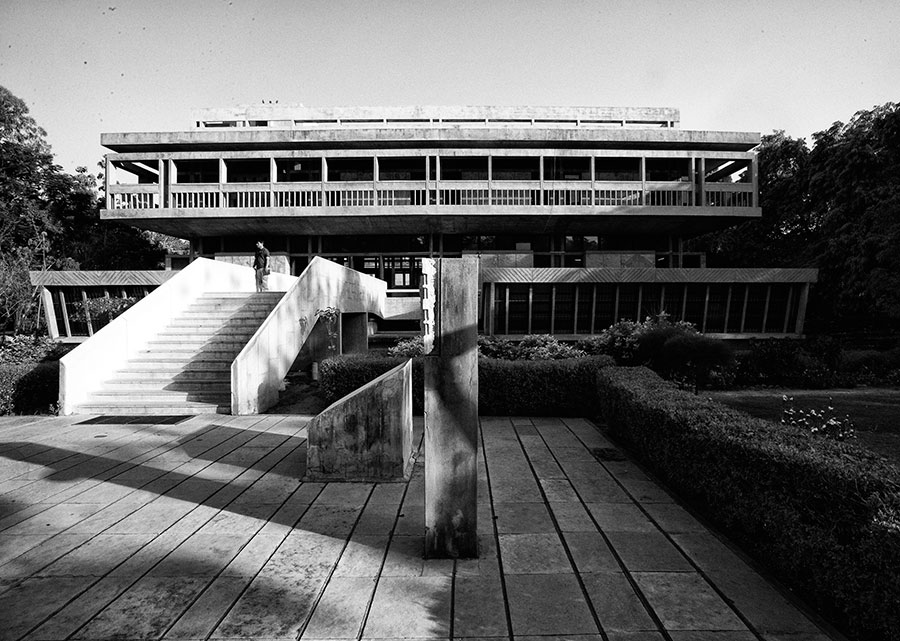
Balkrishna Doshi – Institute of Indology, Ahmedabad, Indija, 1962. | Foto © VSF
Međunarodna nagrada, napravljena po uzoru na Nobelovu nagradu, je uspostavljena 1979. godine u čast rada živih arhitekata. Prošlogodišnji dobitnici su Rafael Aranda, Carme Pigem i Ramon Vilalta – RCR Arquitectes. Alejandro Aravena, Frei Otto, Rem Koolhaas, Zaha Hadid i Toyo Ito su među prethodnim dobitnicima ove nagrade.
Sve informacije o Prickerovoj nagradi možete pročitati na The Pritzker Architecture Prize, a fotografije najvažnijih radova Balkrishna Doshi-ja, laureata Pricker nagrade za 2018. godinu, možete pogledati ovde:
Balkrishna Doshi – Laureat Pricker nagrade za 2018.